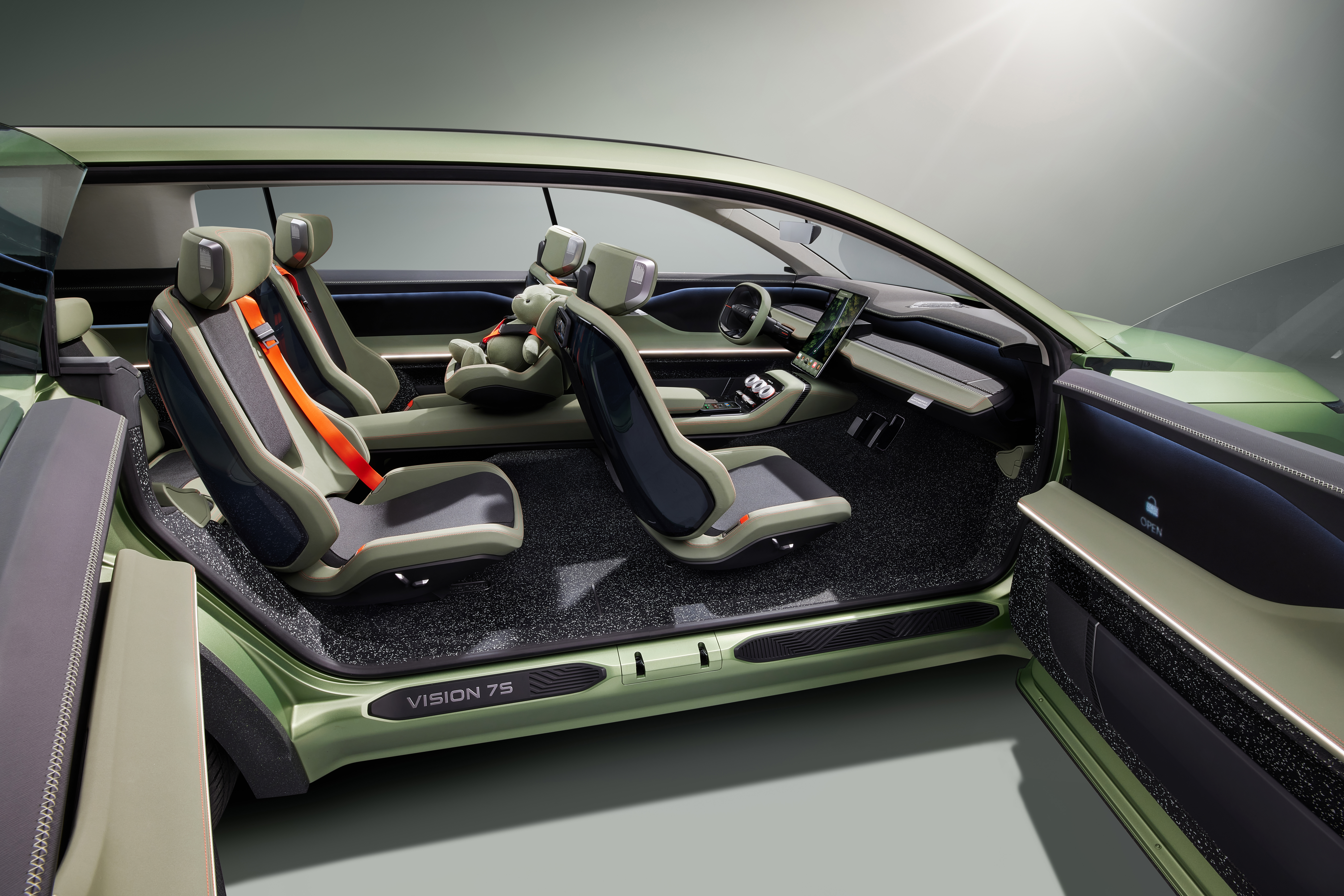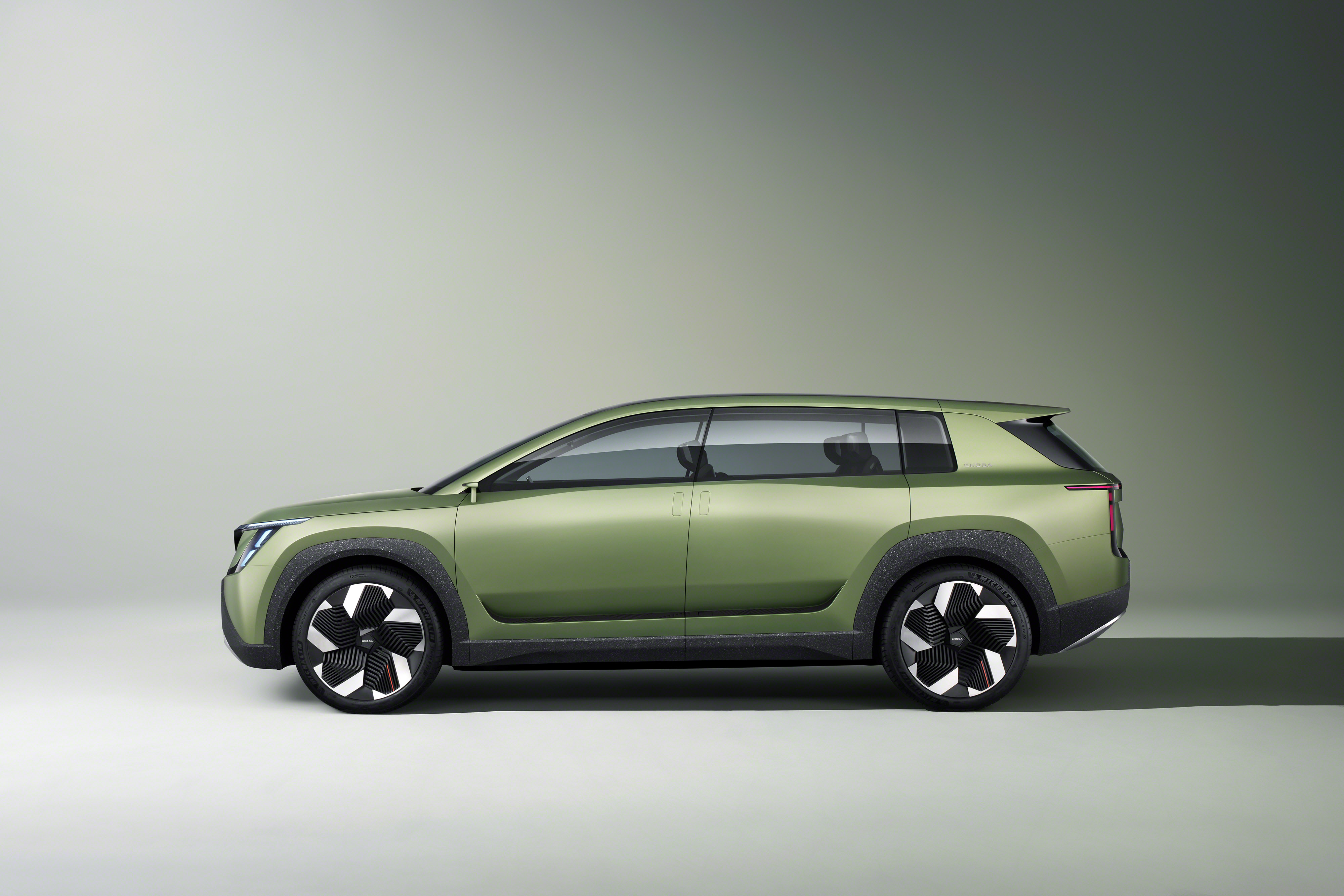State-of-the-art technology
The ŠKODA VISION 7S’s exterior conceals modular technology with an 89-kWh battery that gives the car a range of over 600 kilometres per charge in the WLTP cycle. Charging itself can also be very fast, with a maximum supported charging power of just under 200 kW.
Inside the car, we find a brand new interpretation of the on-board infotainment system with significantly revised graphics and control logic. The dominant feature is the 14.6-inch touchscreen, the largest ever installed in a ŠKODA. The Virtual Cockpit is made up of an 8.8-inch display and a redesigned steering wheel with a flattened top and bottom provides an excellent view in it. There’s also an augmented-reality head-up display. The steering wheel has two large spokes at 6 and 12 o’clock: the lower one incorporates a touchpad that can be used to control some functions when the car is stationary. Elsewhere on the steering wheel, we find special haptic scroll wheels, which have been given bright orange accents for easier orientation.
 Interior of the ŠKODA VISION 7S
Interior of the ŠKODA VISION 7S
On the centre console below the large screen are six buttons that take the user into the infotainment, phone, vehicle settings, navigation and app menus, with a sixth button that can be configured at will. There are also three rotary dials, the outer two for climate control and the middle one for controlling the main screen (zooming the map, scrolling through lists etc.). Two buttons are used for selecting the car mode, and of course there’s a volume control as well.
Above this set of controls is an ergonomic armrest that makes it easier to operate the large infotainment screen. The screen can be divided into sections for greater efficiency and to ensure the driver has all the information he needs. The navigation map can be placed in the upper section, for example, while the configurable section can be used to place various functions – such as the image from the child camera above the rear seats – using widgets.



























